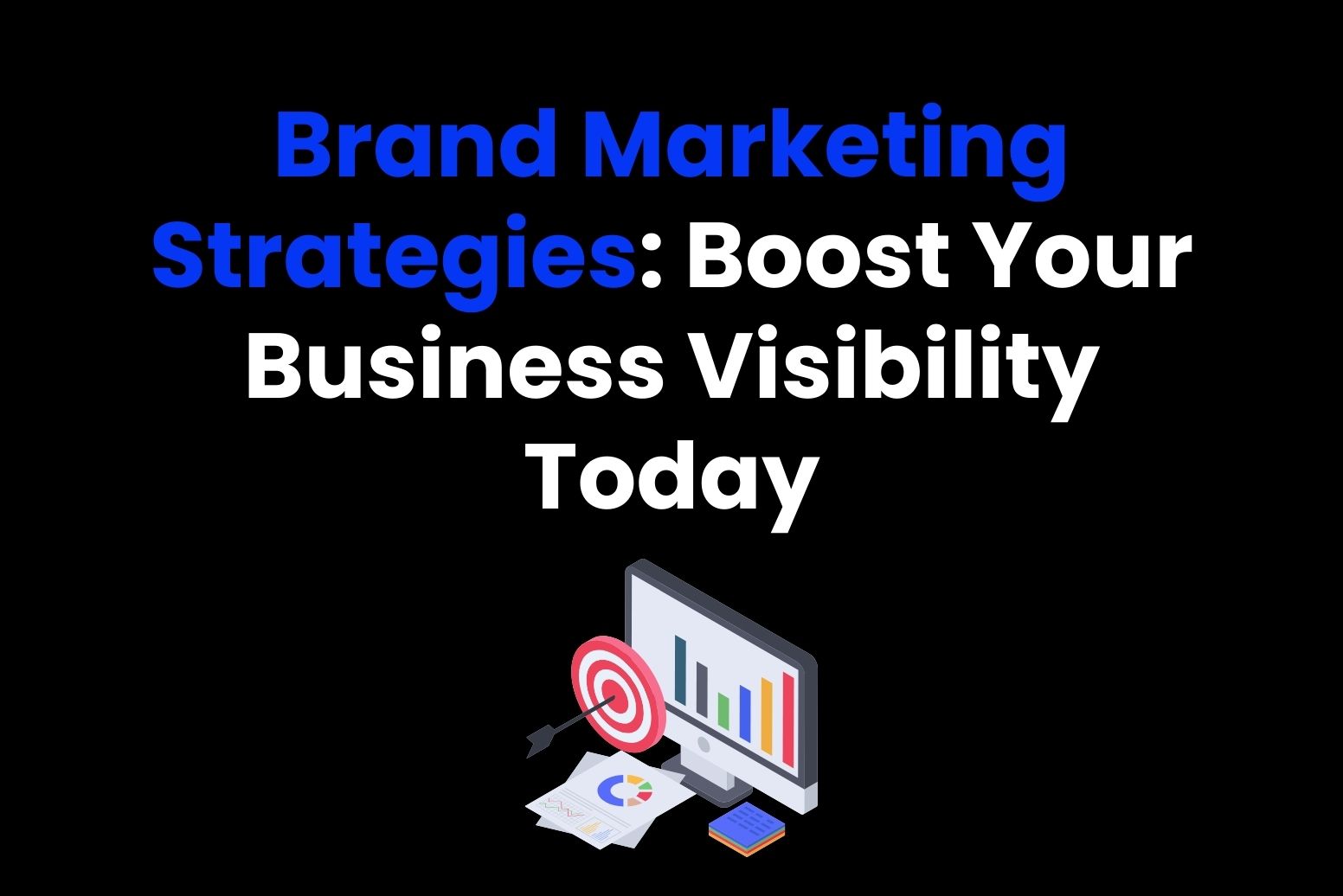Brand marketing plays crucial role and build long-lasting relationships with consumers. Brands need to establish an identity which will connect with their consumers. Brand marketing facilitates your company from the rest of its competitor; boosts their trust, loyalty and visibility. To understand marketing strategies we shall discuss some of the key brand marketing strategies by which your business profile can become distinguished higher than the rest and make you stay long term attached to your customers and at the same time you will get a competitive advantage in the ever changing scenario.
Part 1: Understanding Brand Marketing
The core of a business identity lies in brand marketing and it is important to understand the same for business success. In this chapter, we will define what brand marketing is, what the key components of a best strategy are, and why it’s more important to do than ever in today’s quick paced, current times. It can turn brand marketing for your business into an effective mechanism to leave an indelible mark on the customer.
What is Brand Marketing?
Brand marketing is the process of promoting and advertising a business, product, or service by focusing on its identity. Instead of just telling people about the features of a product, brand marketing is all about telling a story and creating an emotional connection with the target audience. It is being able to shape consumers perception of the brand through the consistent messages and visual elements. The objective is to gain market uniqueness and to ensure that the business or the product would be highlighted with something special and easily memorized to the customer mind.
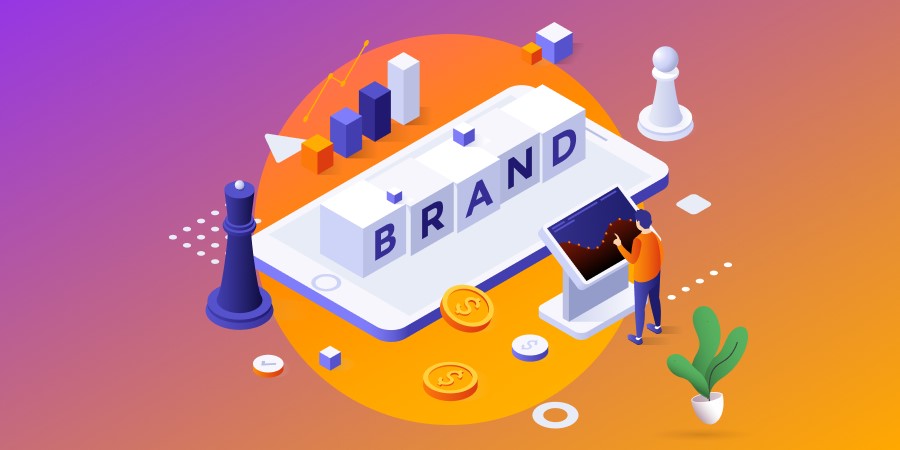
Key elements of a strong brand marketing strategy.
These are several key components a good brand marketing strategy takes place with for building coherent business ideas yet powerful presence for one brand:
- Consistent Branding: Effective brand marketing relies primarily on consistency. Each and every message, visual, and any form of interaction should identify with the brand’s character.
- Target Audience Understanding: This is one of the essential aspects of brand marketing. You have to find out who your customers are and what they value most.
- Unique Value Proposition (UVP): This is the key message that communicates that makes your product or service different, better, or more appealing than others in the market.
- Authenticity: If the brand is perceived to be genuine and trustworthy, then it will have an excellent chance of building long-lasting relationships with its audience.
- Storytelling: By sharing the story behind your brand, its mission, and the problems it aims to solve, you can create a compelling narrative that resonates with customers and strengthens their emotional connection with your brand.
Why Brand Marketing is Crucial in 2024
Brand marketing is very crucial in the year 2024, as companies face harder competition both in digital and traditional markets. Using brand marketing will therefore ensure your business is positioned differently and create customer loyalty that will spell long term success for your business.
Consumer Trust and Loyalty
Consumer decisions are primarily influenced by trust factors, particularly in this modern digital age. The more options available, the more likely a customer would go for a brand in which they have trust and are familiar with rather than a brand that they neither know nor feel uncertain about. If your brand marketing strategy is good and transparent, offers constant value to consumers, and delivers the goods it promises, this will help build that confidence in your brand. With trust established, then comes customer loyalty, which means customers are more likely to come back to your brand, make repeat purchases, and tell others about it.
Competitive Advantage in Crowded Markets
With so much crowding in markets nowadays, it can be difficult to stand out, especially with the advent of e-commerce and digital marketing. A strong brand identity can give you a competitive edge by differentiating your business from others. This way, when people know your brand and realize its value, they tend to opt for it rather than other competitors. Brand marketing also enables businesses to command a higher price, since consumers are willing to pay more for a brand that they feel close to and can trust.
Adaptability in the Digital-First World
The world is becoming more digital by the day, and businesses must be able to adapt to new technologies and changing consumer behaviors. It allows the brand to navigate a digital-first world with greater ease when one has a strong brand, as a strong brand means that even with change and new platforms, tools, and trends, their basic idea of identity and core values can stay intact, as brands which have strong, clear identity can respond much faster to such changes whether they are about social media or even email marketing or maybe a collaboration with an influencer.
Role of Technology in Brand Marketing
Technology plays an extremely significant role in brand marketing in the modern era. Putting it this way, digital tools and social media and artificial intelligence do not make false saying that businesses have more resources to develop and market their brands. Thanks to the new age of technology, for the right reason there are more efficient way to streamline marketing process, market targeted and customer experience.
Tools Used for Brand Development Over Time
Brand marketing has really changed over time. Before, businesses are advertising through print media, radio, and television in a traditional way. Even these types of advertisements have value, but digital marketing tools have changed the scenario between brands and consumers. Today, through social media platforms, like Facebook, Instagram, and Twitter, businesses can get connected with their target audience easily, and more content marketing, SEO, and email marketing campaigns are going on to increase visibility in front of customers.
AI’s Contribution to Precision Marketing and Personalization
Brand marketers now find AI as a priceless tool. For instance, AI-powered tools can analyze customer data and predict preferences or suggest relevant products and even automate communication through chatbots and personalized email campaigns. In this manner, using AI for delivering customized experiences, brands can boost their customer engagement and conversion rates substantially.
Part 2: Core Components of Effective Brand Marketing
Proper brand marketing can be the difference between your business and the rest when it comes to standing out in today’s competitive market. Focusing on four core components—building a strong brand identity, knowing who your target audience is, storytelling, and having a solid digital presence. It allows businesses to create lasting relationships with their customers and increase visibility. Here’s an overview of these essential elements:
Building a Strong Brand Identity
A strong brand identity is the base of any successful marketing strategy. First, it is for the first time you are establishing your brand’s mission, values and purpose and through these, you will learn what your brand actually stands for. This will also transmit to your audience about what your brand is all about and the worth that it provides to visitors. Visual elements are logo, color scheme, typography, design style that make your brand unique to look at.
Understanding Your Target Audience
To tailor your brand marketing efforts, you need to understand who is your target audience? Crafting messages and campaigns is difficult when you have no idea who you’re speaking to. Start by segmenting your audience based on demographics (age, gender, income) and psychographics (interests, values, lifestyle). This helps you create more personalized experiences for different segments, therefore increasing engagement, customer loyalty.
Storytelling in Brand Marketing
Brand marketing cannot be made complete without storytelling. This means that the brand will emotionally connect with the target audience, which establishes a lifelong relationship. The journey, values, and mission of your brand will be shared because of a great story. Instead of selling products or services, the perfect use of storytelling allows customers to enter the brand’s world and see the purpose behind the business and how it serves them.
Digital Presence and Social Media Strategy
In the digital era, a strong online presence is no longer negotiable in effective brand marketing. Your website, social media sites, and online reputation together comprise the digital identity. It must be easy to use and informative with information consistent with your brand messaging and design. Your website is at the heart of your digital marketing activities, so it needs to drive the visitor to perform conversion actions such as subscribing to a newsletter or making a purchase. The other very important tool in relationship building is through social media sites. These can be done through regular posts, like updates, promotions, or even some behind-the-scenes moments that represent your brand identity.
Part 3: The Future of Brand Marketing
Future of brand marketing is being set by new trends and coming technics as technology and consumer behaviours evolve. In this part, we’ll talk about how personalization, data driven marketing and the new innovative technologies such as AR, VR, and AI are influencing the way brands communicate with their audience. In 2024 and beyond, these shifts will transform the way we do brand marketing; we will walk through ways businesses can adapt to stay in front of the curve. There’s a lot of exciting things that lie ahead for the brand marketer.
Personalization and Customer-Centric Marketing
Personalization is rapidly becoming an important factor for modern strategies for marketing. Today’s consumer wants the brand’s offering to be customized as much as possible according to the preferences, behavior, and need of the individual himself. It is made into reality by the increased availability of data and improvement in the technological infrastructure. Personalized content enhances the customer engagement because it is pertinent and allows for the proper messages of communication.
Using Data to Create Personalized Marketing Experiences
The key to effective personalization is data. With all these interactions across websites, social media platforms, customer service channels, and e-commerce transactions, brands now have access to tremendous volumes of consumer data, which can be analyzed to provide the customer with a tailored marketing experience, directly speaking to each one of them. This can include personalized product recommendations, targeted email campaigns, dynamic website content, and custom offers based on past behaviors.
Examples of Brands Success in Hyper-Personalization
Several leading brands have used hyper-personalization as a strategy to connect with their audiences. For example Netflix, which has revolutionized personalized content recommendations for streaming. It looks at user behavior and, based on that, customizes the content that’s displayed on users’ homepage so, at all times, users see fresh and relevant options. Over email, Netflix also personalizes marketing – like sending a notification about a new show or movie based on individual preferences to keep users engaged with the service.
Emerging Trends and Technologies
Technology has quickly revolutionized brand marketing encouraged by the trends above. Such as augmented and virtual reality and AI powered tools that business could use to talk to their customers in a new, exciting way. These are what startups are pioneering and what is the future of branding?
Augmented Reality (AR) & Virtual Reality (VR) in Brand Marketing:
- AR: It superimposes digital elements on the real world to enhance customer experiences.
- Example: IKEA allows customers to visualize furniture in their homes before purchase.
- VR: It immerses customers in fully virtual environments, offering deeper interaction with products.
- Metaverse: Shared virtual space that combines AR, VR and the internet where brands can also create virtual events and environments
- Companies like Adidas and Coca-Cola are experimenting with virtual goods and experiences
Voice Search & Conversational AI:
- Voice Search: As voice-activated devices (e.g., Amazon Echo, Google Home) become more popular, brand content needs to be optimized for voice queries
- Customers are looking for short, natural, and relevant answers.
- Conversational AI: AI-powered chatbots engage the customer in real time with support, answering questions and helping with purchases.
- Example: Brands like Sephora and H&M use AI to help customers find products, sizes, and recommend products.
Part 4: Common Challenges in Brand Marketing
Brand marketing is important to grow any business is essential, but it is not without its set of challenges, that affect how effective a brand’s strategy can become. These challenges should be recognized and resolved for marketers to understand and overcome these challenges and achieve long term success. These are three common challenges in brand marketing: inconsistent brand messaging, adapting to rapid market changes, and dealing with budget constraints.

Inconsistent Brand Messaging
One of the major challenges in brand marketing is to maintain consistency in messaging across all touchpoints. Inconsistent brand messaging arises when a company fails to present the same identity, tone, or values across marketing channels. This can confuse the customers and also damage the reputation of the brand.
How to overcome
However, this can be overcome through developing a guide for the business’s brand. A brand guideline outlining things like tone, style, and the key messages a brand should convey. This ensures that your employees and partners are all on the same path with a very strong cohesiveness in brand identity. Regular audits of all content across channels can also help one identify and resolve inconsistencies in messages before they affect the brand’s image.
Adapting Rapid Market Changes
The marketing landscape is constantly transforming, with new technologies and trends, and changing consumer behaviors at a rapid speed. Brands need to become agile and capable of transforming their strategies to keep pace. If they fail to change, they risk losing relevance as well as competitive advantage.
How to overcome
Businesses have to attend market research and subject analysis to manage these changes effectively. A lot of things comes from tracking industry trends, customer feedback and competitor strategies. Moreover, brands need a flexible culture wherein their marketing team should be able to quickly respond to changes to situations. They can be launched even in the experimental mode or, alternatively, try new marketing media for testing before going all in with them.
Budget Limitations
Budget constraints are another common challenge that brands face when trying to implement effective marketing strategies. Marketing initiatives are very intensive, especially when advertising, content creation, and technology are concerned. Small businesses or startups with small budgets cannot compete with more rich companies.
How to overcome
The best way to promote organic growth is through a combination of SEO and quality content. Brands can start by creating great content that touches their audience’s hearts. Lastly, there is optimization of the marketing budget by planning and tracking. By utilizing analytics tools which measure performance of campaigns and immediately change it so brands can make sure they get the ROI out of their campaigns and that they are not wasting marketing dollar.
Part 4: How Arvin AI Simplifies Brand Marketing
A good brand must start with a good, recognizable logo. A logo is often the first thing that comes to mind for customers when thinking of a brand. It plays a very important role in creating a company’s identity. But designing a professional and memorable logo can be time-consuming and challenging. That’s where Arvin AI comes in. Arvin AI is an advanced AI Powered tool that automatically makes it easy to create a logo for your business. And helping businesses of all sizes create custom logos within minutes, all for a small fraction of the cost and without having to know anything about logo creation.
Key Features of Arvin AI
Intuitive Logo Design Interface
Arvin AI is an interface that is easy to operate and allows users to simply create and customize logos even without design skills. The interface is intuitive, helping users choose from a style, font, and icon to obtain the perfect logo.
AI-Powered Design Suggestions
Arvin AI uses AI to generate logo suggestions that fit the user’s criteria. It combines the brand values, industry trends and the user’s preferences to suggest an appropriate design which satisfies the brand goals and message. A business can choose a logo that best depicts its brand for them to appear professional and visually appealing.
Customizable Templates
Arvin AI offers a wide selection of logo templates that can be fully customized to suit the specific needs of a business. Whether you’re looking for a minimalist design, a bold and modern logo, or something more traditional. Arvin AI has templates adjust color, layout, and typography.
High-Resolution Output
Once the logo design is finalized, Arvin AI allows users to download high-resolution logo files. By doing this, businesses can easily trace this new logo in any medium such as website, social media profile, business card or marketing paper without compromising the quality.
Branding Tools and Integration
Beyond simple logos, Arvin AI has additional tools to help match a brand. Businesses can generate matching brand assets including business cards, social media headers, and more so that their entire brand presence will look uniform. These tools are ensured for businesses to ensure that the branding is unified across all the different mediums.
Fast and Affordable
Creating a professional logo using Arvin AI is both fast and cost-effective. While it may take months to hire a traditional designer and come at a very high price, creating a custom logo with Arvin AI allows businesses to do so in a fraction of the time and at a fraction of the price, which makes it ideal for startups and small businesses that operate on low budgets.
Steps to create logo that enhance your brand marketing
Step 1: Go to Arvin AI’s Logo Design Platform
Go to the logo.arvin.chat through your browser and create an unique logo having a transparent background. So, start creating your brand identity easily.
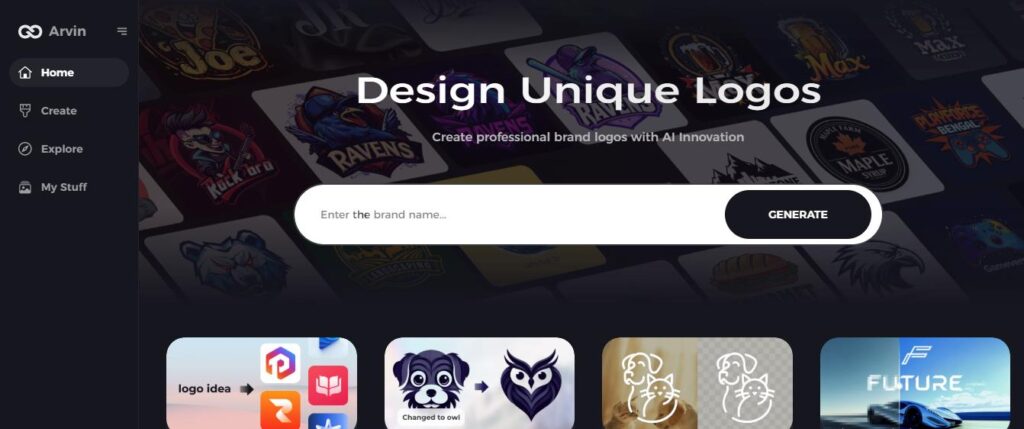
Step 2: Enter Your Brand Details
Enter your company name along with its industrial category. You may request the logo with a transparent background so that the AI is able to understand your requirements for your brand.
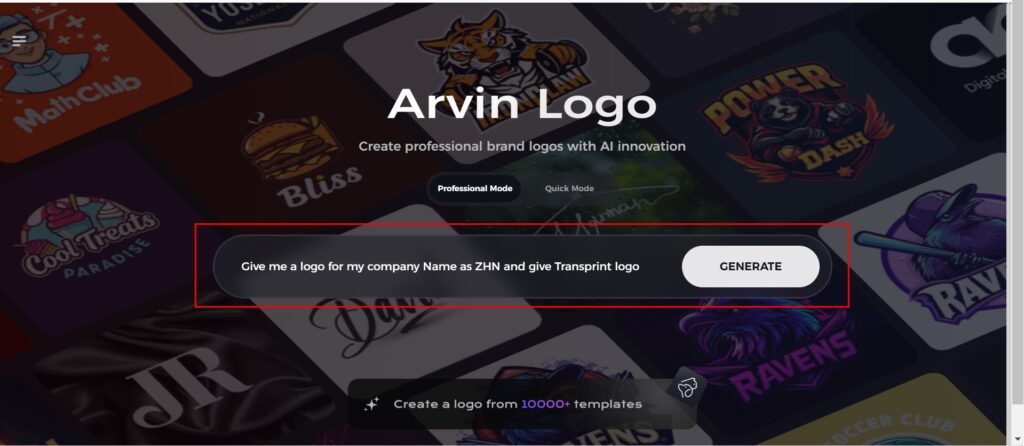
Step 3: Select Your Industrial Category
Pick the industry that best matches your business. This ensures the AI generates designs tailored to your market and core values.
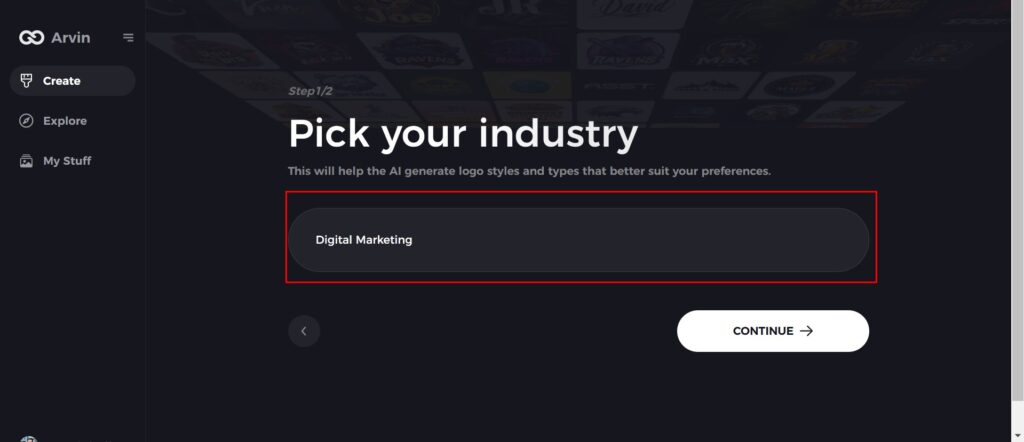
Step 4: Select a Design Style
Choose a design style that fits your brand’s vision. If unsure, leave it at “no style” for an AI-generated surprise. The selected style will guide the logo creation process.
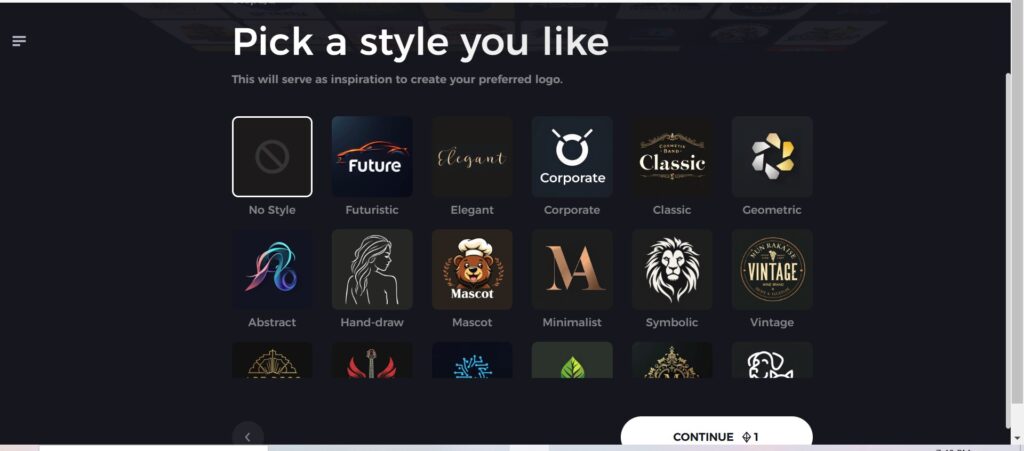
Step 5: Browse Logo Ideas
Arvin AI will generate many logo concepts according to your input. Scroll through them and find the one that best represents your brand. Select the design that best expresses your business.

Step 6: Customize Your Logo
Fine-tune the selected logo by changing colors, fonts, and icons. Make sure it fits the aesthetic of your brand and its personality.

Step 7: Download Your Logo
Once satisfied with the design, download your logo in formats like PNG or SVG. These formats work well across websites, social media, and print, boosting your brand’s visibility.
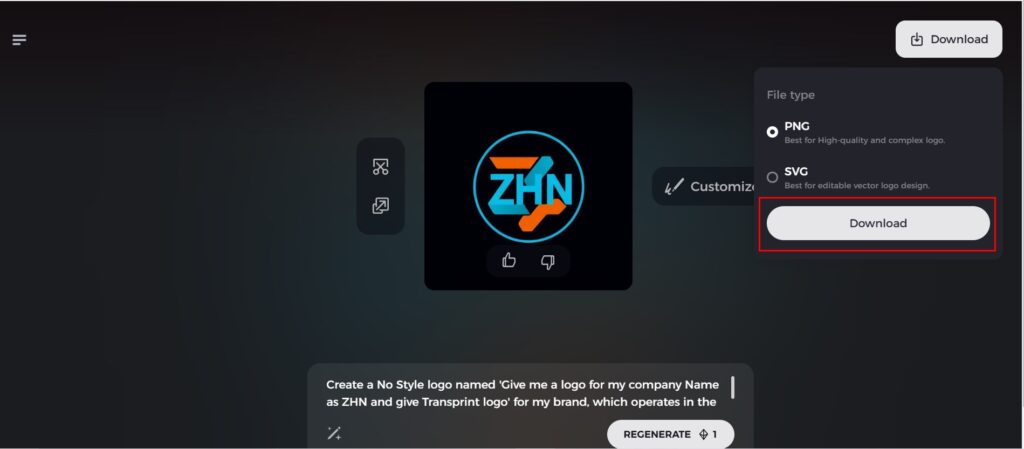
Conclusion
In today’s competitive business world it becomes so crucial with a strategic brand marketing approach. In the future as AI advances marketing, Arvin AI will be integral in the simplification of logo creation and having a professional, unified brand for businesses. Brand marketing using AI can help them become more visible to the customer, increase relationship levels. Start elevating your brand marketing today with Arvin AI and take that first step to create a memorable brand.
FAQs
What is the goal of brand marketing?
The goal is to create a very robust & very distinct identity that would speak to the target audience and trust and loyalty around it and differentiation from competitors.
How do small businesses win at brand marketing?
In order to survive, small businesses must concentrate on a pronounced version of their identity. They tell their story consistently, and they need to use social media, SEO to reach them.
What are the metrics for measuring brand marketing success?
Some of the metrics to compare the efficacy of brand marketing are growth in sales, customer loyalty metrics, brand awareness & engagement rates.
How does AI contribute to brand marketing?
AI automates task, personalizes marketing strategy and collects data to optimize marketing campaign. Tools like Arvin AI streamline logo creation and enhance brand consistency.

